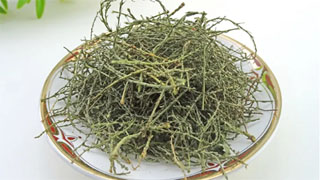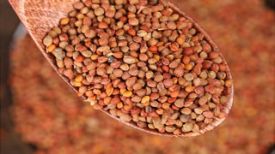
1. Aliases
Mountain and River Willow, Tamarix, Red Jingtiao, River Willow, Spring Willow, Red Tamarix.2. Plant morphology
Deciduous shrubs or small trees, up to 5 meters tall. The branches are reddish purple or light brown, and the small branches are slender and drooping. Leaves alternate, small, scaly. The raceme is integrated into a scattered panicle and grows at the end of the annual branch; The flowers are small and pink; Bracts triangular; Sepals 5, ovate; 5 petals, 5 stamens, born between the lobes of the flower disc; Disk 10 or 5-lobed; Ovary 1-locular, style 3, rod-shaped. The capsule is small and often 3-lobed. The seeds are densely hairy. The flowering period is from July to September, and the fruiting period is from August to October.
3. Origin distribution
Born in the mountains and coastal saline alkali beaches; The garden is cultivated. Distributed in Northeast China, North China to the middle and lower reaches of the Yangtze River, and south to Guangdong, Guangxi, and Yunnan.
4. Harvesting and processing
Harvest tender branches and leaves before the flowers bloom from June to August, and keep them dry in the shade.
5. Characteristics of medicinal herbs
The branches are thin cylindrical with a diameter of 0.5-1.5 millimeters. The surface is grayish green, with many alternate scaly leaflets. Crunchy and easily broken. The slightly thicker branches have a reddish brown surface, with leaves often falling off and protruding leaf bases remaining. The cross-section is yellow white, and there is pulp in the center. Slight breath, light taste.
6. Nature, taste, and meridian tropism
Mild in nature, sweet and spicy in taste. Guixin Meridian, Lung Meridian, and Stomach Meridian.
7. Effect and function
Dispelling wind, relieving skin, and penetrating rash. Xin Wen Jie Biao Yao belongs to the subcategory of Jie Biao Yao.
8. Clinical applications
Dosage 3-6 grams, decoction in water; Apply an appropriate amount externally, decoct and scrub with soup. Used to treat measles opacity, rheumatism, and pain.
9. Pharmacological research
Has inhibitory effects on the respiratory system; Has hepatoprotective effects; Inhibiting bacterial growth and having antipyretic effects. Pharmacological experiments were conducted on the water decoction, and the results showed that it has a significant cough relieving and phlegm eliminating effect, and has inhibitory effects on Streptococcus pneumoniae, Streptococcus A, Staphylococcus aureus, and influenza bacteria.
10. Chemical composition
Containing various components such as tamariferol, tamarix ketone, tamarix alcohol, β - sitosterol, carotenoid, 3 ', 4' - dimethylquercetin, stearic acid, kaempferol-4 '- methyl ether, quercetin-3', 4 '- dimethyl ether, salicylic acid, etc.
11. Taboos for use
People with measles and excessive sweating should not take it, as excessive dosage can cause discomfort.
12. Compatibility prescription
① To treat colds, fever, and headaches: 9 grams each of Xihe Liu and peppermint, 6 grams of Jingjie, 9 grams of mung bean coating, 3 grams of ginger, boiled in water. (Qingdao Chinese Herbal Medicine Handbook)
② Treatment of rheumatism and pain: 30g each of Xihe Willow, Huzhang Root, and Jixue Teng. Boiled in water. (Zhejiang Medicinal Flora)
③ Treatment of Pipi: Xihe Liu Jian Tang, exposed overnight, drink several times until five o'clock. Pi will disappear on its own. (Hygiene Simplified Formula)
④ Treatment of alcoholic disease: Xihe willow, not much, dried in the sun into fine powder. Take 3 grams per serving and mix with wine. (The Compendium of Climbing on Steep Rocks)
The content of the article is for clinical reference only. Non professionals in traditional Chinese medicine are not allowed to try medication.


